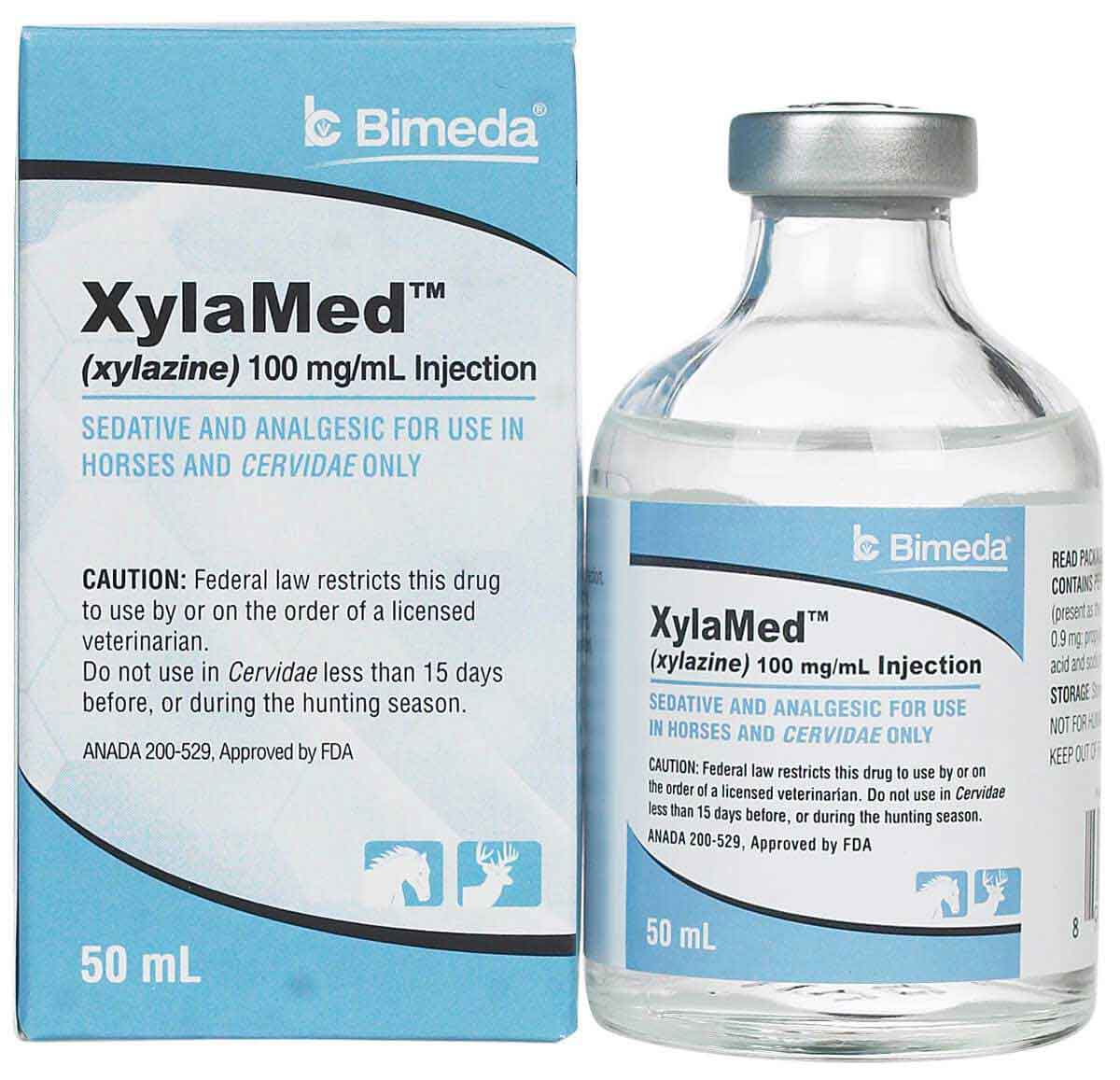
The Michigan Regional Poison Control Center released a report this month about the veterinary drug, Xylazine. Michigan recently reported its first human overdose death from Xylazine, and there are reports the drug is used in conjunction with heroin.
According to the report:
"Xylazine was created in 1962 and found to be a potent central alpha2 adrenergic blocking agent. The drug causes sedation and anesthesia, respiratory depression, slow heart rate, muscle relaxation and potentiates pain relief. However, in humans, it also causes significant slowing of the heart rate and low blood pressure. Because of this, it was never FDA approved for human use. However, it is a potent veterinary agent, used as an animal "take- down" agent and anesthetic and is known by the trade name RompunTM. In the early 2000s, Xylazine became a drug of abuse in Puerto Rico and was added to heroin or included in "speedballs" as an addition to or as a substitute for heroin. Appropriately so, it was called anesthesia de caballo (horse anesthesia) on the street. Since it has many of the same effects as opioids, it could be substituted for the opioid or the two together have additive effects."
The website, www.drugs.com, lists Xylazine as a sedative and anesthetic for horses and Cervidae (deer, elk, etc.). There are warnings Xylazine should not be used on animals that are harvested for food or human consumption.
Xylazine side effects and ingestion methods from the report are:
"Xylazine can be swallowed, inhaled, smoked, snorted, or injected into the muscle or vein. There is no information on vaping. It has rapid onset within minutes and can last 8 hours or longer depending upon the dose, way it was taken, and whether it was mixed with an opioid or other drug. Intoxication mimics clonidine and tizanidine as all share the same mechanism of action. Initially people become sleepy with dry mouth. The heart rate and blood pressure will drop. With increasing dose, they may become comatose with small pupils, their muscles can become floppy and their body temperature can drop. Eventually breathing will decrease and eventually stop. This can look very similar to an opioid overdose. It is difficult to clinically determine if someone has taken Xylazine or an opioid. Xylazine does not bind to the opioid receptor so it will not respond to Naloxone. Xylazine should be suspected If someone appears to have an opioid overdose with small pupils, not breathing well, unresponsive but no response to Naloxone and has a very low heart rate (30-40s) and low blood pressure."
Both the report and other medical websites list Xylazine acts more like traditional CNS-Depressant in humans, so expect to see many signs of CNS-Depressant use listed above and the signs of CNS-Depressant use listed in DRE, ARIDE, and DITEP manuals. However, the report listed constricted pupils as one of the signs of Xylazine use. Constricted pupils are more consistent with the drug category, Narcotic Analgesics. Xylazine was not intended to be administered to humans because of how the drug decreases respirations and heart rates in humans, so complete testing and side effects documentation on humans likely was not completed. For DRE and ARIDE trained law enforcement and our DITEP trained professionals, constricted pupils may be from an Overlapping Effect of the opiate drug combined with Xylazine – Xylazine doesn't constrict pupil size, but the opiate drug does constrict pupils. People under the influence of Xylazine may exhibit Horizontal Gaze Nystagmus and Lack of Convergence, in addition to the other signs of use noted above.
The most common method of ingestion in animals is through intravenous and intramuscular injection. In humans, the most common ingestion method will most likely be intravenous injection or inhalation/smoking (combined with heroin, aka "chasing the dragon"). Vaping opiates and narcotic analgesics have not traditionally been a popular method of ingestion, so vaping Xylazine should not be expected. However, a prudent investigator should not rule out vaping entirely as a method of ingestion. The report indicates Naloxone (trade name Narcan) will not be effective because Xylazine doesn't work on the same receptors in the brain as opiates. Xylazine will also not show up on traditional urine toxicology screening, which may explain why this drug will be popular with people who work in professions subject to random drug screening.
The report doesn't indicate where Xylazine is being sourced from for distribution into illicit drug markets. Still, it would be a safe bet Xylazine is being diverted from legitimate veterinary practices. Criminal drug trafficking organizations and drug users are likely using Xylazine as a cutting agent and cost-saving measure in illicit drugs to enhance the effects of drugs like heroin and cocaine. Both www.drugs.com and other internet sources indicate Xylazine is often used in conjunction with Ketamine as an animal anesthetic. Ketamine is another popular animal anesthetic and popular street drug that is also diverted from legitimate veterinary practices. Internet sources also indicate Xylazine is a cheap and effective sedative in animals. Xylazine is available by prescription only for veterinary purposes but may be ordered from overseas veterinary pharmacies or the dark web.
To learn more about current drug trends, check out Route 961's list of courses in our link here: https://route961training.com/courses/.